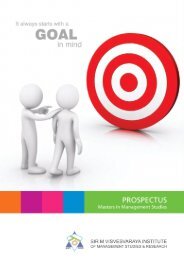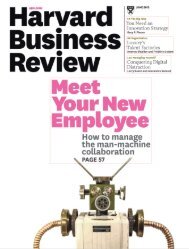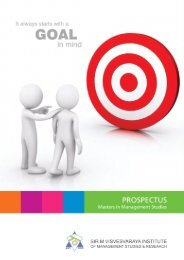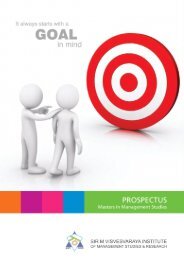+ + +
Create successful ePaper yourself
Turn your PDF publications into a flip-book with our unique Google optimized e-Paper software.
LEADERSHIP<br />
Decisions, decisions<br />
THE REAL LEADERS ARE THOSE WHO TAKE ACTION<br />
By Raymond Hennessey<br />
A<br />
ny time I have a tough decision to make, I wonder what<br />
James Burke would do.<br />
Burke isn’t a household name, certainly not in the<br />
modern pantheon of entrepreneurial leaders like Steve Jobs or<br />
Elon Musk. But that’s not surprising. Burke spent nearly 40<br />
years with the same company—Johnson & Johnson (13 of them<br />
as chairman and CEO)—then went into public service as chairman<br />
of the Partnership for a Drug-Free America. Neither role is<br />
“hip” to the modern entrepreneur.<br />
But you should know Burke—like, have-a-picture-of-him-onyour-office-wall<br />
know him. If you’re serious about leadership,<br />
serious about being a leader that your employees,<br />
customers and stakeholders can be proud<br />
of, you should understand, as he did, that it all<br />
comes down to how you approach decisions.<br />
Leadership is about bringing order to chaos,<br />
fighting ambiguity and staying true to your<br />
company’s—and your own—principles.<br />
In Burke’s case, that meant making what<br />
remains one of the riskiest corporate decisions<br />
ever: spending $100 million to recall a product<br />
that wasn’t actually faulty.<br />
Burke led J&J through its darkest period.<br />
In 1982, seven people in the Chicago area died<br />
after taking capsules of Extra-Strength Tylenol<br />
that had been laced with cyanide. Folks were<br />
scared. No one knew how the drugs were being<br />
tampered with. It was random. And it wasn’t<br />
really J&J’s fault. The company wasn’t poisoning<br />
its customers—a crackpot was.<br />
But there was uncertainty among executives<br />
and shareholders about what the company<br />
should do. The costliest option was also the<br />
most unprecedented, and it was the path Burke<br />
chose: pulling 32 million bottles of Tylenol off store shelves<br />
across the country.<br />
In the end, it was worth it. Burke retooled the packaging<br />
to make tamper-proof bottles, then relaunched. It wasn’t<br />
long before Tylenol regained its market share, and J&J shares<br />
regained their market capitalization.<br />
I wouldn’t have done the same. I admit it. I would have<br />
looked for a less-severe option, justifying this by saying I had<br />
to be a steward of my shareholders’ capital. I would have loudly<br />
defended my product’s safety and hired a team of PR pros and<br />
marketing whizzes to deflect the negative press and put the focus<br />
on the real criminal (who, incidentally, was never caught).<br />
And I would have failed. Failed hard. I would have been guilty<br />
of not responding to the true issue: the chaos and uncertainty<br />
facing my customers. You see, Burke knew that the thing successful<br />
leaders have in common is their ability to make difficult<br />
decisions quickly and to remove doubts. They take uncertain,<br />
amorphous situations and turn them into opportunities. Real<br />
Train yourself<br />
to recognize<br />
chaos and to<br />
hate it the way<br />
nature abhors<br />
a vacuum.<br />
leaders are defined by what they do, not who they are.<br />
That runs contrary to a lot of teaching these days. There’s a<br />
cottage self-help industry that will tell you how many hours of<br />
sleep you need, how much exercise to get or what books to read,<br />
but it’s usually a load of crap, peddled by people who have never<br />
led anything more than a conga line.<br />
It’s not that easy. Managing employees, selling products and<br />
staying innovative requires decision-making, not eight hours of<br />
REM sleep. Every company, from startups to the largest corporations,<br />
faces ambiguity. Leaders need to decide whom to hire,<br />
which customers to target, which products to develop and how<br />
to market them. Some of these decisions are<br />
life-or-death—as was Burke’s dilemma at<br />
J&J—while some lean toward the mundane.<br />
But none are easy. There is rarely a right or<br />
wrong outcome. Most choices come with<br />
some degree of risk.<br />
Think of the worst CEOs. Almost all<br />
their failures came from a hesitancy to<br />
make decisions. That means not setting a<br />
clear vision for the company, not dropping a<br />
customer who was taking up too much time<br />
and resources for too little revenue, not responding<br />
to new technology or competitors’<br />
innovations, not firing a problem employee.<br />
Rather than rising to the challenge, such<br />
CEOs simply choose inaction.<br />
Of course, you could make the wrong<br />
decision. (There was, after all, New Coke.)<br />
But the danger lies more in allowing ambiguity<br />
to fester than in the consequences of<br />
a poor move. To quote President Theodore<br />
Roosevelt: “In any moment of decision,<br />
the best thing you can do is the right thing,<br />
the next best thing is the wrong thing, and the worst thing you<br />
can do is nothing.”<br />
Rather than look at leadership as an all-or-nothing, bornnot-made<br />
equation, the answer is simpler. Train yourself to<br />
recognize chaos and to hate it the way nature abhors a vacuum.<br />
It won’t matter if you decide you need a team of great people<br />
to tackle a problem, or if you just want to do it yourself. It<br />
doesn’t matter if you approach an issue with absolute certainty<br />
or with a healthy amount of self-doubt. No one will care if<br />
you create a clear communication plan or keep your reasons<br />
to yourself. Just make a decision—unambiguously, and without<br />
shame or worry.<br />
In making the toughest decision a CEO can make, Burke<br />
showed how easy it can be. That’s why I channel him now, and<br />
why I often reach for a bottle of Tylenol when my own leadership<br />
responsibilities start getting the best of me.<br />
RAYMOND HENNESSEY IS EDITORIAL DIRECTOR OF ENTREPRENEUR.COM.<br />
ILLUSTRATION © SHUTTERSTOCK/DIEGO SCHTUTMAN<br />
50 ENTREPRENEUR MARCH 2015






